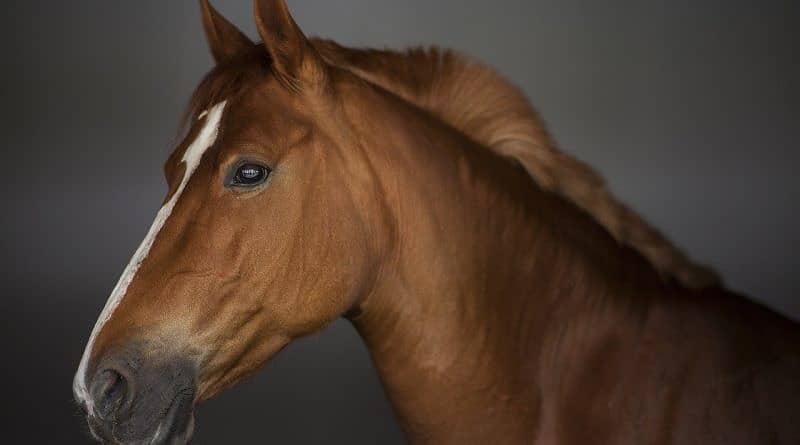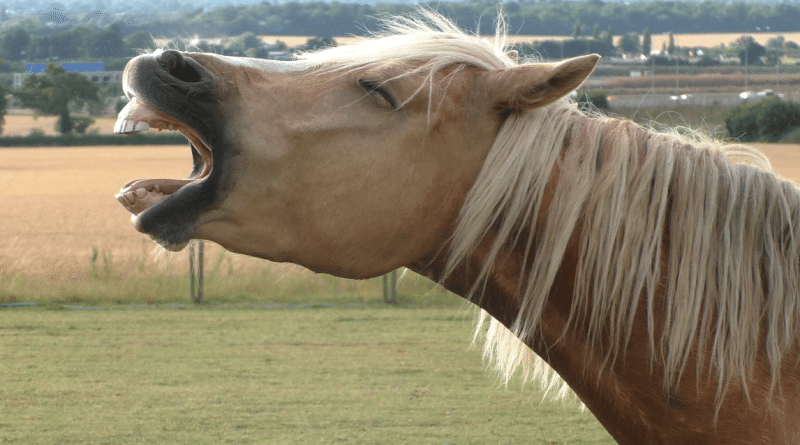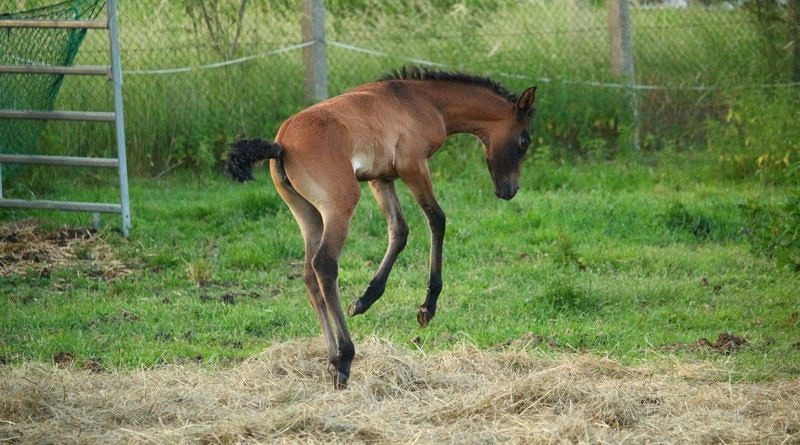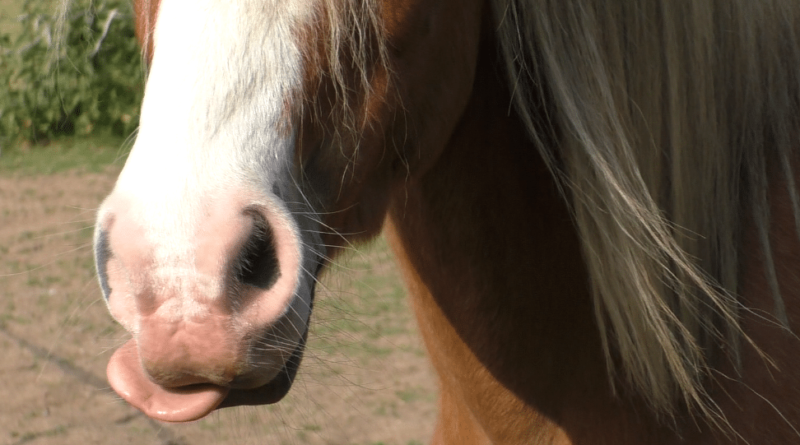What does it mean for a horse to have learned helplessness?
Does your chosen training method induce learned helplessness? What it is and why we should all learn to recognise it.
“Learned helplessness” describes the state where an animal ‘shuts down’ as a result of being unable to influence their environment or circumstances. In humans, learned helplessness is most often associated with clinical depression, though it is also discussed in the context of “enhanced interrogation techniques” (a euphemism for torture). In horses, it is something many trainers deliberately – though not necessarily knowingly – attempt to induce.
When you first hear the term “learned helplessness” it can sound a little bit clinical and inaccessible. But let’s try to overlook that and make some sense of it!
Being helpless means being unable to do anything about your situation. For example, you may literally be tied to a chair and unable to move or you may have a physical condition that prevents you from moving that you cannot change.
However, you can also FEEL helpless when in reality you are not. This state of feeling like you cannot change your circumstances is often the result of previous experiences – i.e. it is learned.
If you try to do something many times and fail each time and can’t understand why, you may begin to believe that what you’re trying to do is simply not possible and give up.
This is what we call ‘learned helplessness’. You have learned, through repeated failure to change your situation, that you are helpless. Even if new opportunities arise, you now believe so deeply that you cannot do anything to change your circumstances that you won’t even try.
When we, as humans, feel like nothing we do has a positive impact on our lives and that no matter what we try or how hard we try, we cannot improve our circumstances, we can become depressed or develop other mental health issues such as anxiety.
Learned helplessness in other animals
Many early experiments on learned helplessness used rats or dogs to demonstrate the concept.
A common experimental paradigm went something like this:
A dog was placed in a cage with a lever. At intervals, the cage would be shocked with electricity. For some dogs, pressing the lever stopped the shock. For others, the shocks stopped at random and nothing the dog could do would change their circumstances. Dogs with control over their environment quickly learned to press the lever and stop the shocks. Those with no control tried everything they could at first – but they eventually just ‘gave up’ and lay down.
What makes this an example of learned helplessness is that these powerless dogs, when moved to a situation where they could escape the shock by jumping out of the cage, didn’t even try. They had become so convinced that there was no way to control their circumstances that these dogs, now able to escape if only they knew it, lay down instead and whimpered as they were repeatedly shocked.
The dogs that had control of their environment in the lever experiment, on the other hand, were able to continue to problem solve. They didn’t have a lever to press but they explored their options and figured out very quickly that they could jump out instead.
So not only does learned helplessness influence behaviour in that specific scenario, it limits learning ability beyond that one context as well.
Interestingly, further experiments in both humans and other animals have shown that just knowing that you have control is enough to lower stress and reduce the impact of an unpleasant stimulus. You don’t necessarily always have to stop the unpleasant stimulus – you just need to know that you have that option. This has implications for horse training as it means that giving your horse the power to stop something unpleasant from happening actually makes them more willing to endure it as well!
Why induce learned helplessness in a horse?
Frequently in the past, and still to this day in some cultures, the first phases of horse training were all about inducing learned helplessness. This is where we get the idea of “breaking a horse’s spirit” and gives us the term “breaking in” or just “breaking”.
Though the science was not understood, trainers sought to overwhelm the horse with frightening experiences while ensuring that the horse had no means of escape or control (for instance the horse would be tied to a tree). After struggling and failing repeatedly to do anything to improve their situation, the horse would succumb to learned helplessness and ‘give up’. In this depressed state, a rider could be introduced and training could begin without a real fight.
If you have ever seen a trainer “laying a horse down” as part of the “breaking” process, you have probably witnessed a deliberate attempt to induce learned helplessness.
One approach is to begin by round penning the horse so that they are somewhat tired before the laying down process is attempted. The trainer will then typically tie up a front leg – though there are many methods – and force the horse to the ground. Many horses will try to fight this but will eventually succumb. In this state, the trainer can proceed to touch and manipulate the horse’s body, often sitting on or standing over them. After a period (often judged by whether the horse appears to have fully ‘accepted’ the situation – i.e. learned helplessness), the horse is let back up. Some trainers will proceed to do this a few times, looking for the time when the horse really ‘gives in’.
Trainers will describe the process as showing the horse that they can ‘relax’, and even suggesting this helps the horse develop ‘trust’. They generally appear to be unaware of the inner turmoil the horse must endure.
The truth is that the vast majority of horse trainers who use methods such as this do not really know why the method works. The words they use to describe what’s happening are really what they think has happened – it’s not a pretence or a gimmick – that’s honestly what they think. They are not cruel people – they just don’t know any better and they think they’ve had success with this approach so they stick with it.
There are many other examples of learned helplessness being induced as part of horse training. Sometimes with some awareness – such as in the case of using rollkur to make the horse ‘submissive’. Sometimes unintentionally – e.g. when “desensitisation” techniques are misused, or by “pushing through” a behaviour that is being triggered by unrelenting pain or fear.
What is very important to understand is that learned helplessness can be created completely accidentally and unintentionally. Yes, there are methods and tools that might increase the risk of it, but no one is immune. Just because you use techniques that are marketed as kind or ‘natural’, does not mean you are exempt from concern about learned helplessness.
A means to an end?
When discussing horse training methods there is a tendency to focus on the efficacy of an approach. Does it work? Do you get a horse you can ride at the end of it?
Inducing learned helplessness is simply unethical. That should be enough for us.
However, there are also unwanted long term consequences – and they can be devastating.
Horses that are shut down – just like humans – can be prone to sudden outbursts and explosive reactions that do not always make sense and are therefore unpredictable.
It is also possible for horses to eventually emerge or snap out of their shut down state when given an opportunity to do so.
In the dog experiments we discussed earlier, the shut down dogs were able to learn to jump the barrier to escape getting shocked if the experimenters actively moved them – one foot at a time – and simulated what they would need to do to get away from the pain. It took two tries for most dogs – but they did eventually learn how to help themselves again.
Horses who rediscover control of their environment can often become reactive and unpredictable as they relearn what works and what doesn’t when interacting with us and the challenges we create for them.
Horses may also struggle to learn new concepts or skills when they have learned helplessness because they are less likely to try to find a way to improve their circumstances and we need that in order to reinforce behaviours.
Most traditional training relies on negative reinforcement (pressure-release) to teach new concepts. For example, you may nudge your horse with your leg, looking for the horse to move away from the pressure, and release that pressure as soon as the horse responds ‘correctly’. The horse then learns that in order to avoid pressure, they must move sideways… But if a horse has learned helplessness, they may simply not even try to find a way to avoid the pressure and therefore never learn what to do in response to this leg cue.
This doesn’t mean that it’s impossible to train a horse that has learned helplessness – but it will be more difficult than with a fully engaged horse who is thinking clearly and actively problem-solving.
Once again we see the importance of understanding how training methods truly work. It is very easy to come up with just-so stories that incorrectly describe how our chosen training technique influences horse behaviour. Most horse people do not want to hurt or harm horses and will seek a ‘kind’ approach. But when it’s so easy to cloak abusive methods in the language of ‘leadership’ and ‘trust-building’, it falls on each of us to learn to fundamentally understand horses. How do they learn? What motivates them? How do they feel about and perceive the world? We need to try to answer these questions in order to select training methods that truly match up to who we believe we are and how we aspire to treat our equine friends.







